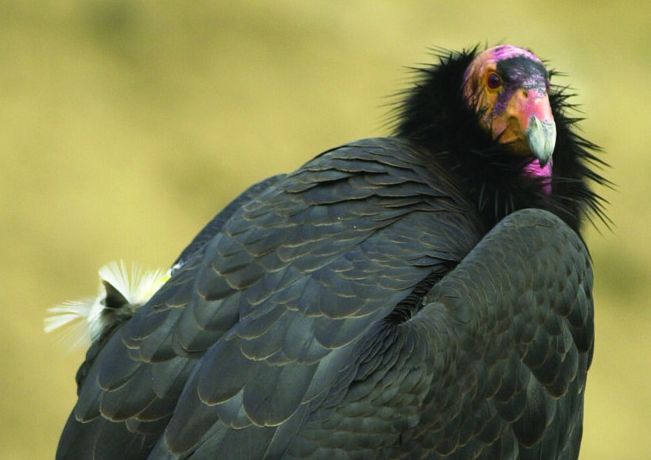#TheInternetNamesAnimals: Do Animals Get the Monikers They Deserve?

Over the past several days, a massive wave of online support propelled the unlikely name "Boaty McBoatface" to the top of a poll proposing monikers for a British polar research vessel.
And because just enough of a good thing is never quite enough for the Internet, Twitter users followed up by asking the perfectly reasonable question: What if the Boaty McBoatface naming aesthetic were applied to animals?
Gauging by the swiftness and the variety of responses under the Twitter hashtag #TheInternetNamesAnimals, quite a number of people had apparently been waiting for exactly this opportunity. [From Blobfish to 'Adorable' Octopus: 9 Animals with Perfect Names]
For instance, @JarodAnderson put forth the name "Pantless Thunder-Goose" atop an image of an ostrich. And Alex Wild (@Myrmecos), curator of entomology at the University of Texas at Austin, suggested "Toothy McHugs" for a trap-jaw ant. Jessa Kent (@JessaKent) shared a colorful cassowary, dubbing it, "Rainbow McMurderbird," while Jonathan Colby (@myfrogcroaked) presented a spiky green caterpillar with the recommended name of "Ouchmaster Flex."
Extinct animals were also fair game, as Franz Anthony (@franzanth) demonstrated with "Crocs McPugface" (the short-skulled crocodile relative Simosuchus) and "Duckface McPancake" (turtlelike marine reptile Henodus.)
And Michele Banks (@artologica) introduced a charming pair: giant panda "Floofy McBoopface" and an unrelated humanoid individual native to Canada, "Prime Mountie McDreamy."
What's in a name?
Sign up for the Live Science daily newsletter now
Get the world’s most fascinating discoveries delivered straight to your inbox.
Perhaps Boaty McBoatface wasn't quite as dignified a recommendation as its future operators and proposers of the poll — the Natural Environment Research Council (NERC) — might have wanted. But as its overwhelming popularity suggests, many factors operate in its favor. It's catchy. It's certainly memorable. And, to be fair, it is an accurate description — when you hear the name, you don't have to think too hard to guess what it might represent.

Animal common names frequently reference some physical feature that helps to identify them — think of the white-tailed deer, the yellow-bellied sapsucker, the trap-jaw ant or the shovel-nosed snake. And no one would suggest that the blobfish's name isn't a perfect fit.
But common names can also be puzzling, or even downright misleading. The red panda is certainly red, but it's no panda — it occupies the Ailuridae family and isn't a bear at all. Cuttlefish, jellyfish and starfish aren't fish — they're all invertebrates (animals without backbones) and are described respectively as mollusks, gelatinous zooplankton and echinoderms. Guinea pigs are rodents — not pigs — and they don't even hail from Guinea.
And as ridiculous as some of the proposals circulating on Twitter may sound, there are certain animal species whose actual common names are equally outlandish.
But don't take our word for it. Just ask Maratus jactatus, the jumping spider commonly known as sparklemuffin, or Acanthonus armatus, also known as the bony-eared assfish.
Follow Mindy Weisberger on Twitter and Google+. Follow us @livescience, Facebook & Google+. Original article on Live Science.

Mindy Weisberger is an editor at Scholastic and a former Live Science channel editor and senior writer. She has reported on general science, covering climate change, paleontology, biology and space. Mindy studied film at Columbia University; prior to Live Science she produced, wrote and directed media for the American Museum of Natural History in New York City. Her videos about dinosaurs, astrophysics, biodiversity and evolution appear in museums and science centers worldwide, earning awards such as the CINE Golden Eagle and the Communicator Award of Excellence. Her writing has also appeared in Scientific American, The Washington Post and How It Works Magazine. Her book "Rise of the Zombie Bugs: The Surprising Science of Parasitic Mind Control" will be published in spring 2025 by Johns Hopkins University Press.











